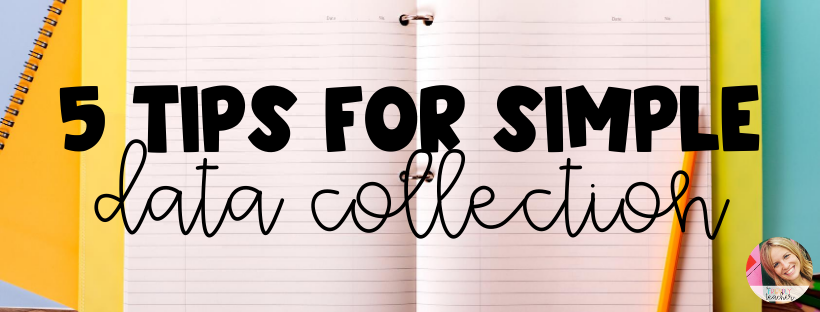
In today’s classroom, we have to keep track of A LOT of data. From intervention, to IEP data collection, typical grading, and more! Today I am going to share 5 tips to make data collection easy for you and not take up so much time!
5 Tips for SIMPLE Data Collection
Student Information Binder
If you don’t have a student information binder you need one. I have a binder and have a section for each kid. All of their data, parent information, and more is stored here. This way when I go to a meeting I can just grab my binder. If I need to do an intervention I can just grab the binder quickly. It is EASY and ORGANIZED.
RTI Quick Folders
I have “quick folders” which basically means I have a folder for each student that is on RTI. In the folder, I keep the simple data sheet where I mark down the intervention that I do with the student. So, we do the intervention I mark down when I did it and what I did on the paper. (Grab this paper FREE here).
Then, I stick it back in the folder. This is great because if you have aids or parents doing interventions then they can quickly write on the sheets too.
I also will keep quick activities in their folder. So, if I am doing a comprehension intervention with a student you will find several paragraphs of the day (found here) in the folder. This way I can just grab their folder and there are already activities ready to go and do.
I spend one planning period a month preparing activities to go in the folder. This way I can just grab it or a parent volunteer can grab it and the activities are already in there along with the data sheet.
Assessment Binders/Folders
I keep an assessment binder that has one assessment for every standard. This takes a little bit of time to prepare, but makes your life so much easier in the long run!
Then, when I am doing an intervention I can check their progress at the end of each week or month.
Once you have this binder set up it can be used for every student, every year. I put it in dry erase sheets so that they can just fill it out and I can mark their score on my data collection sheet!
Here are the assessments I keep in the binder for each intervention:
Comprehension– Paragraph of the day for every skill (I typically will keep the grade below mine and my grade level to check on different interventions).
Phonics– I use this intervention binder found here! I pull one of the sheets for each skill into the assessment binder. Everything else I will use during their intervention time.
Fluency– I will keep a fluency passage from Reading A-Z for every level in the binder.
The Magical Friday Ketchup
Every single Friday I set up 30 minutes for Ketchup and Pickle time. This is a time where I can catch up on data collection. I can pull kids for assessments and get any data that I need collected. Having this time set aside every week makes sure that I get done what I need to get done.
While I am doing that students are catching up on any work that they do not have done yet. Or picking an optional activity if they have everything done. I typically will do technology type pickle activities or fun holiday themed activities!
The students know exactly what they are doing and I can pull kids one-on-one or in small groups to get data collected that I need.
Grace
Ya’ll teaching is hard. They keep putting more and more on our plate without taking anything off. If you didn’t get enough data one week, give yourself some grace. You are not a superhero and teaching kids has to be your number one priority. You know how they are doing and you don’t need one million assessments to show that! 🙂
If you take some time at the beginning of the year to set up easy binder systems that are quick to pull and easily organized, data collection is SO.MUCH.EASIER!
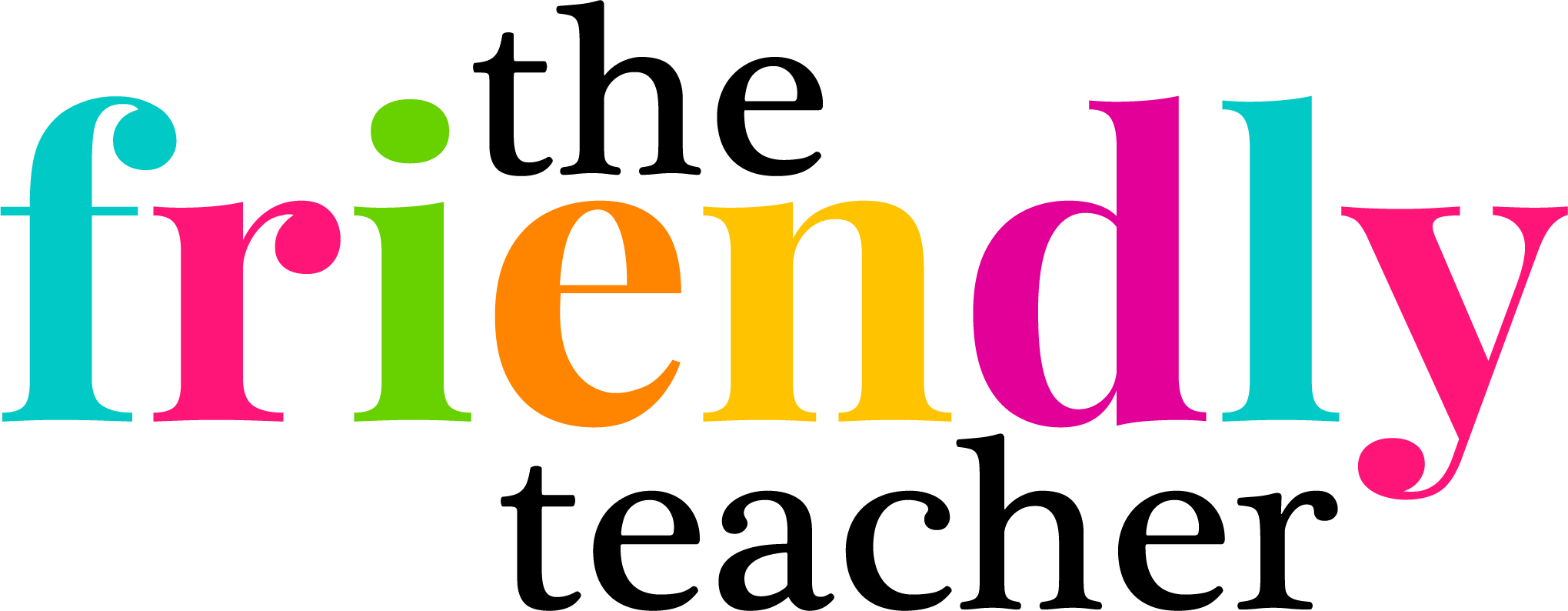


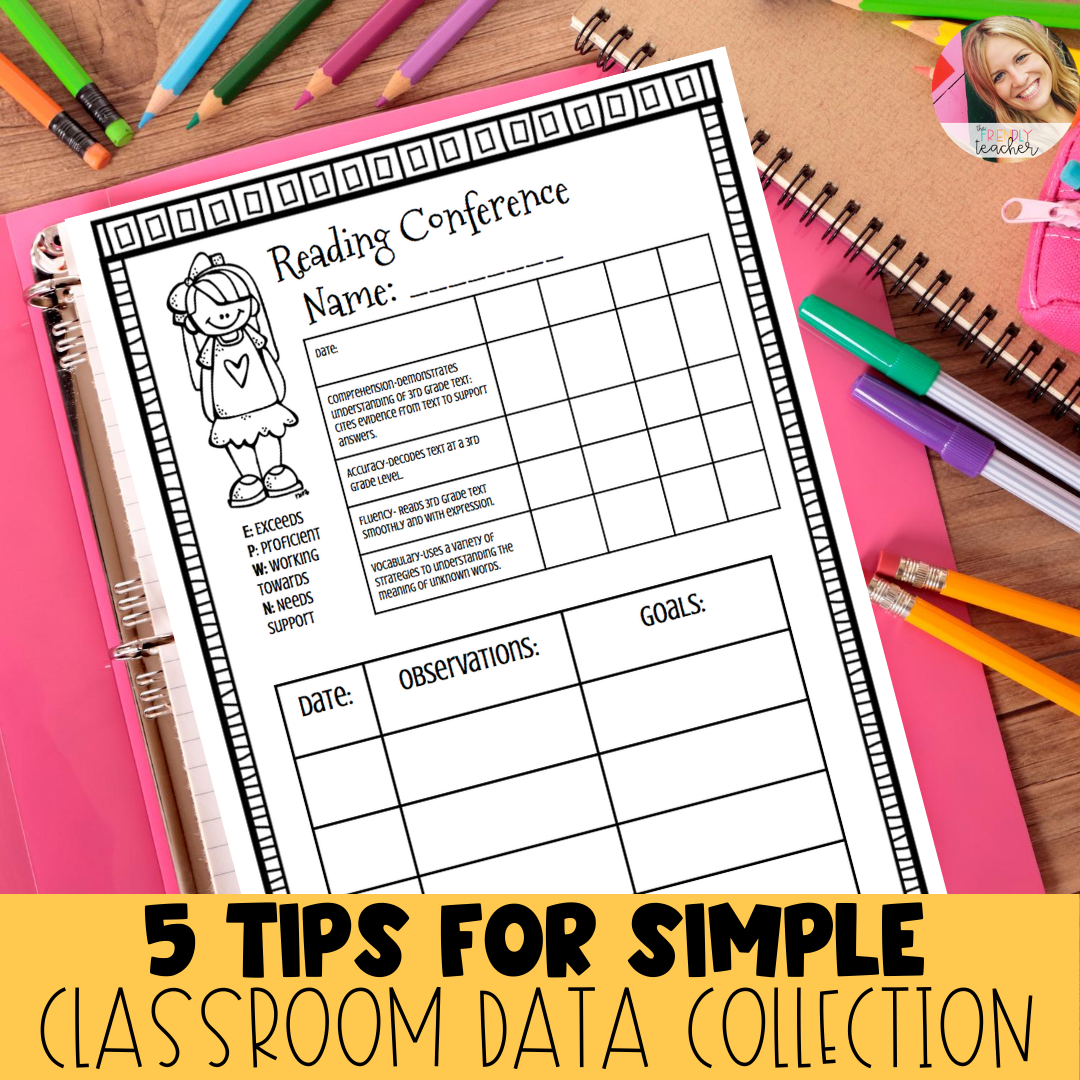
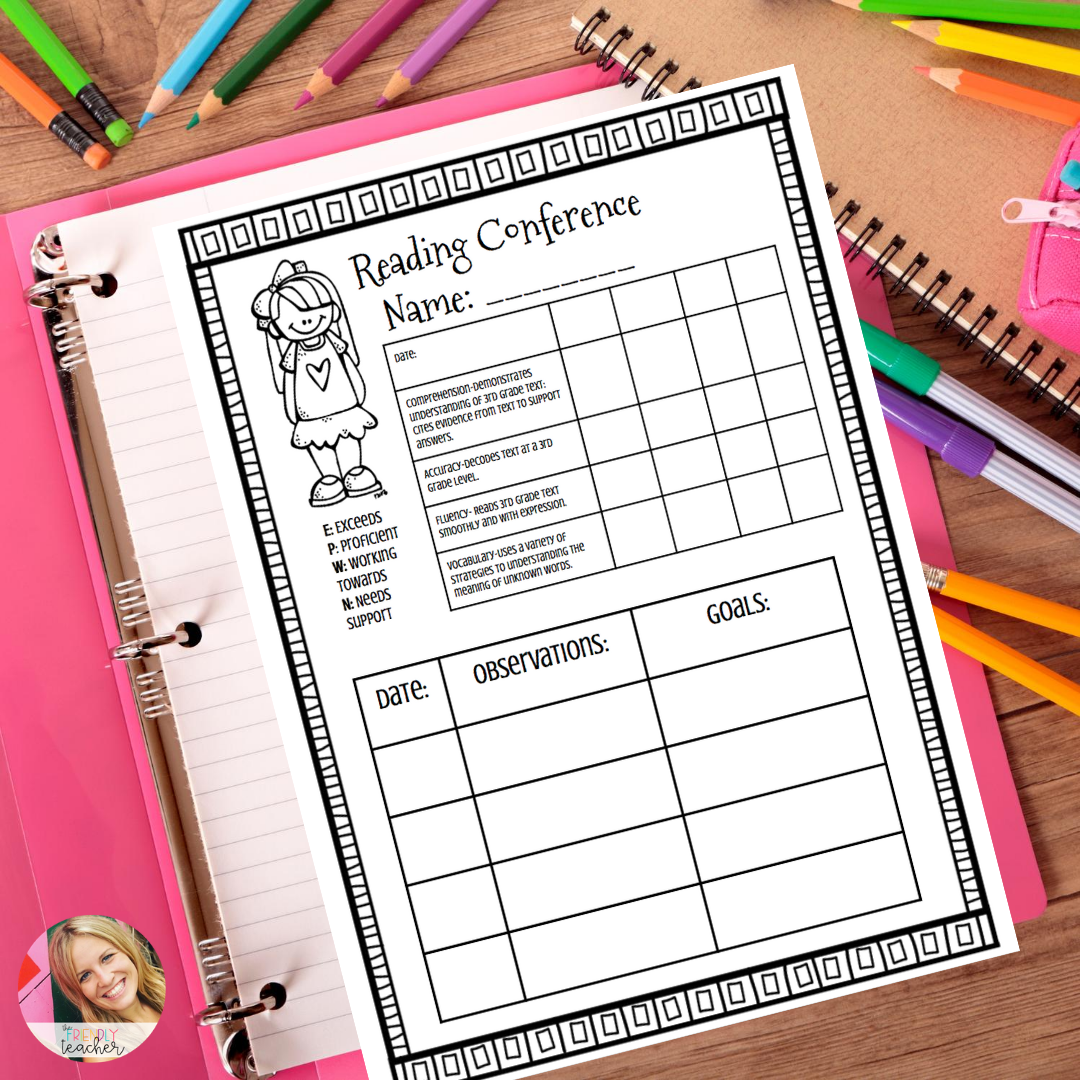
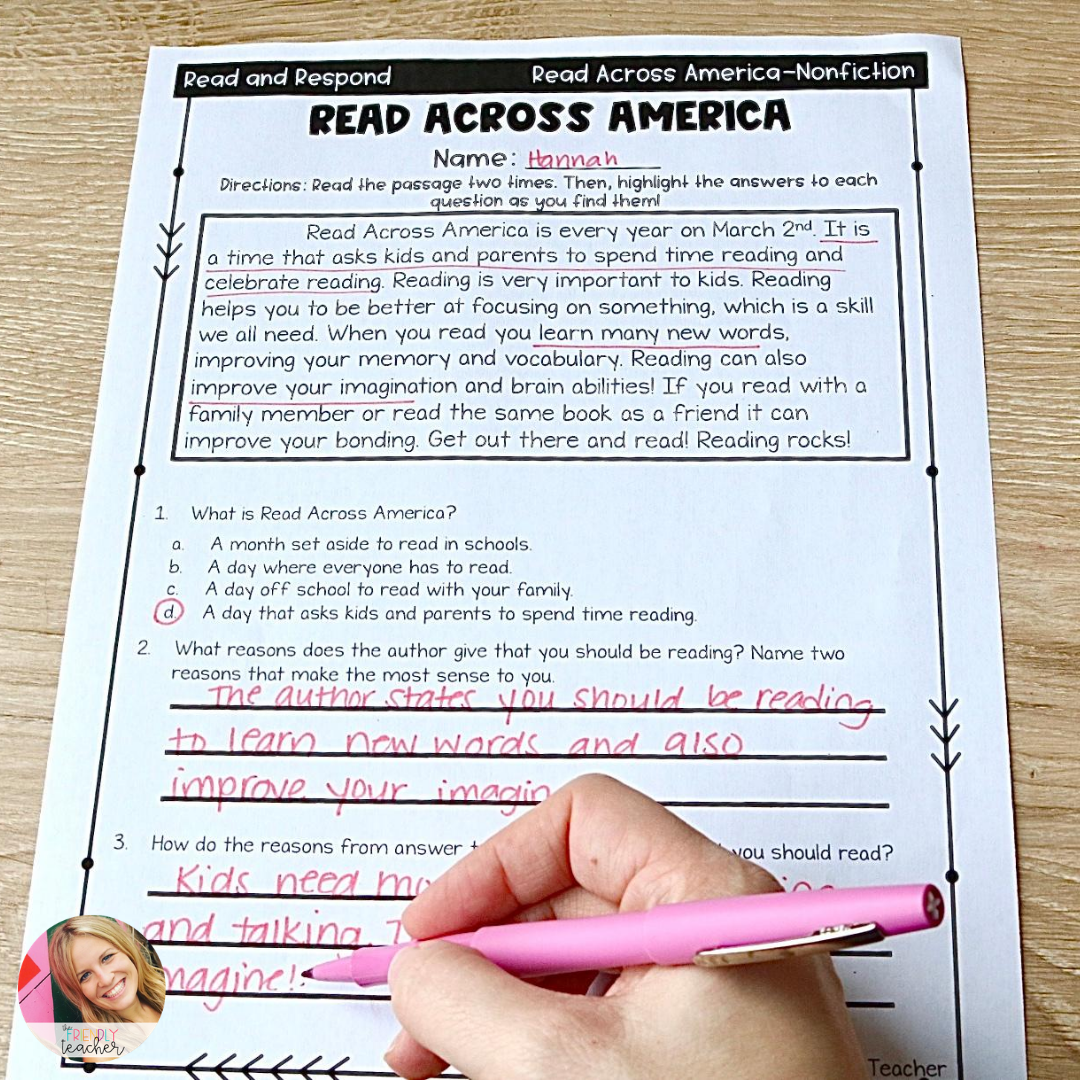




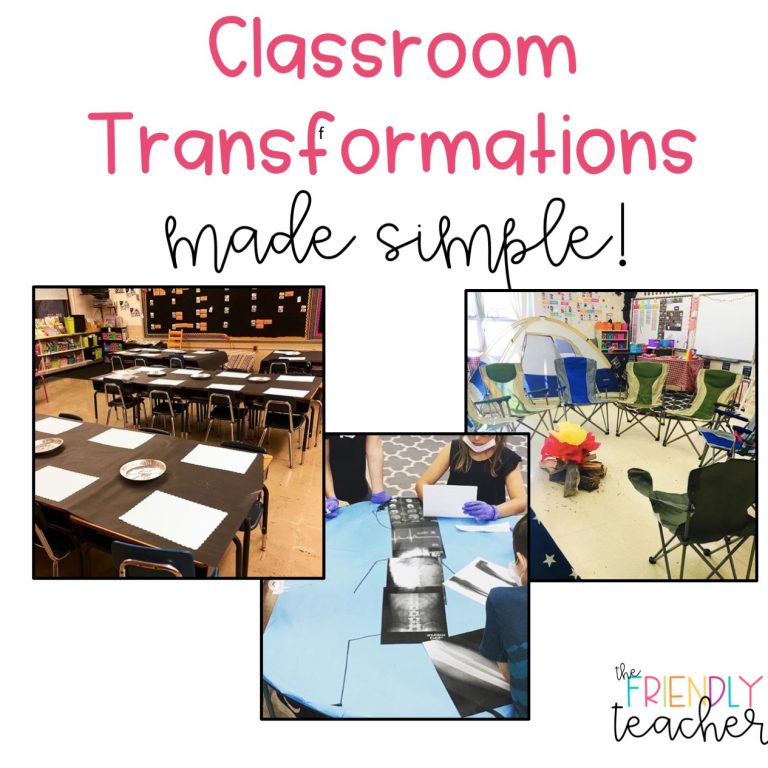

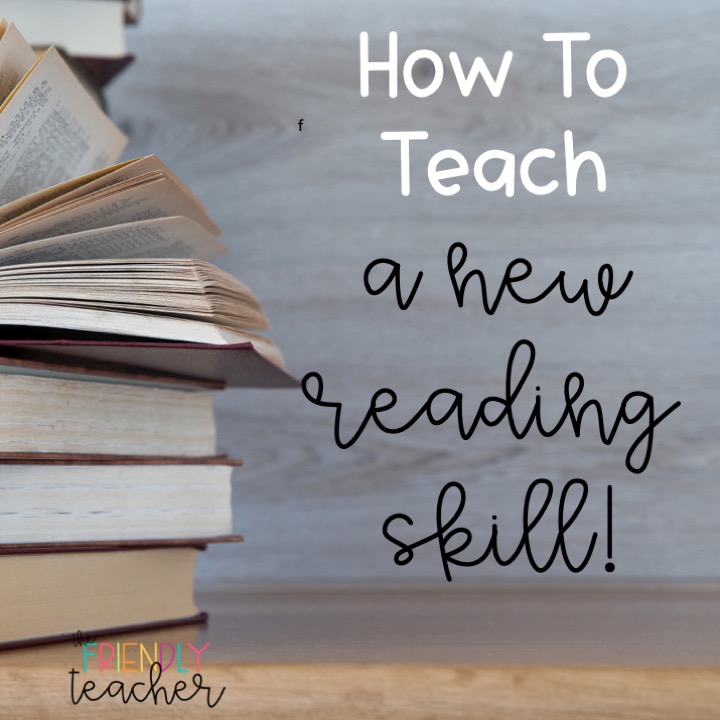

Hannah Wilde
I am so glad you’re here! I love helping 3rd-5th grade teachers by providing ideas, engaging resources, and professional development they need. I am a literacy coach who is here to help lessen the workload for teachers while making them more confident! I want students to be continually engaged in a rigorous environment!